










Embarking on a hiking adventure with your furry friend is a beautiful way to explore the outdoors, but encountering wildlife can make the experience even more exhilarating. The rustling of leaves, the sighting of curious eyes – these moments offer a glimpse into the lives of creatures that share our planet. In this comprehensive guide, we’ll delve into the fascinating realm of wildlife encounters during hikes with your dog. From squirrels to bears, we’ll provide tips on how to navigate these encounters safely, ensuring both your well-being and the harmony of the wilderness.
Also, if you are local to Colorado (or other high altitude areas), make sure to keep in mind that the altitude effects your pups! Check out Tips for Hiking With Dogs in Colorado: Dog-Friendly High Altitude Fun.
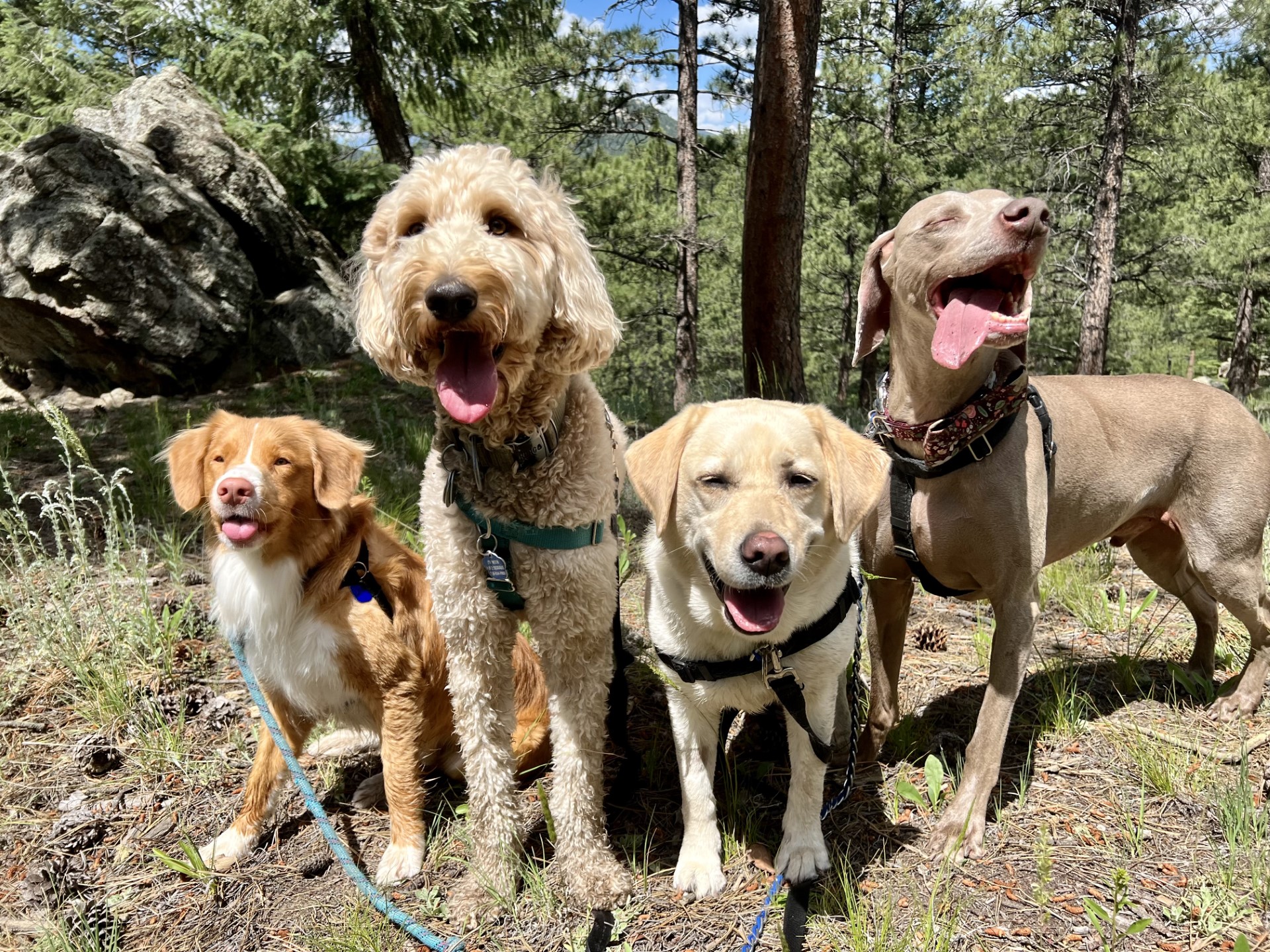
Squirrels and chipmunks are nature’s acrobats, and they often spark your dog’s curiosity. However, it’s crucial to prevent chasing, which can lead to habitat disruption and stress for these creatures. Teaching your dog the “leave it” command is invaluable in such situations. Additionally, keeping your dog on a leash provides better control, allowing you to maintain a respectful distance without disturbing the natural balance.
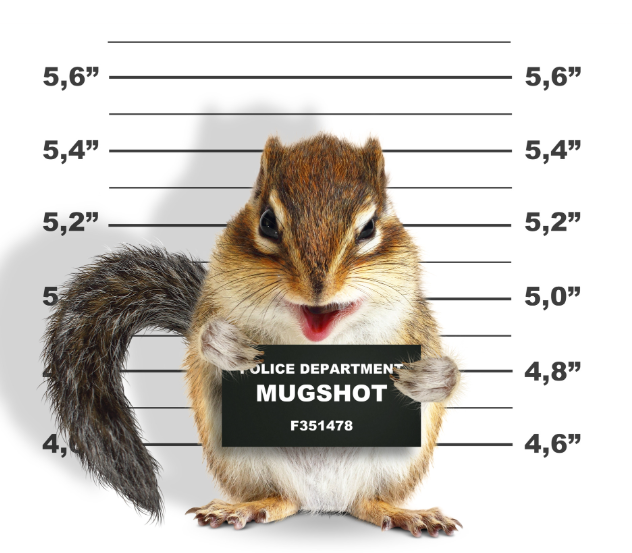
The sight of a deer grazing or leaping through the woods can be mesmerizing for both you and your dog. However, dogs’ instinctual response might be to chase. To prevent this, practice the “recall” command consistently. In case your dog gets overly excited, stay calm and call them back to you. It’s essential to avoid stressing the deer and other wildlife, as a stressed animal can behave unpredictably.
Coyotes are both curious and wary around dogs. While they typically avoid direct conflict, they may become defensive if they feel threatened. It’s best to keep your dog leashed and avoid engaging with coyotes. If a coyote approaches, stand your ground, make loud noises, and slowly back away. This reinforces the notion that humans and dogs are not easy prey.
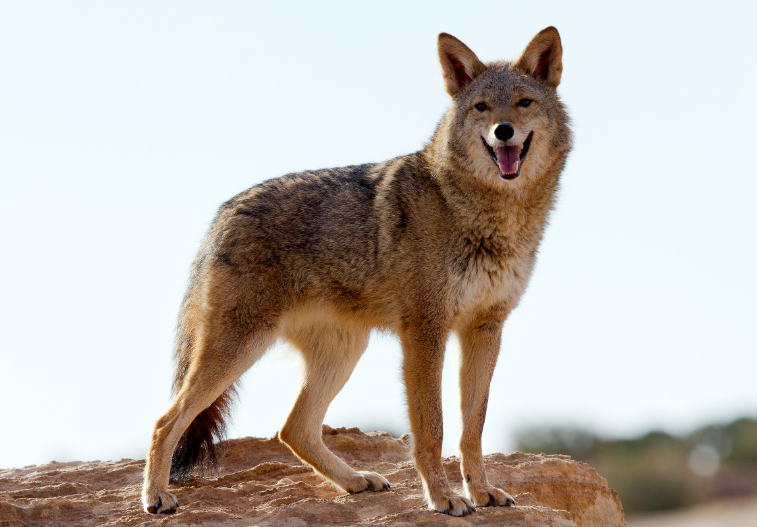
Encounters with bears are rare but require a unique approach due to their size and potential danger. Make noise to alert bears of your presence, giving them the opportunity to avoid you. Avoid surprising them around bends or in dense foliage. In the unlikely event of a close encounter, speak in calm tones, slowly back away, and avoid direct eye contact. Carrying bear spray adds an extra layer of safety, but remember, it’s not a substitute for caution and responsible behavior.
Snakes are part of the ecosystem, and some might cross your path during hikes. Teach your dog to avoid them, and reinforce commands like “leave it” when necessary. Familiarize yourself with venomous snakes in your area, such as rattlesnakes, and stay vigilant. If you encounter a snake, calmly and slowly back away without making sudden movements.

Birds of prey can intrigue and captivate both you and your dog. Your dog might want to investigate these aerial wonders, so keeping them on a leash ensures their safety and the protection of birds and their nests. It’s important not to disrupt their environment and nesting grounds, as they play a crucial role in the ecosystem.
Mountain lion encounters are extremely rare, but it’s essential to know how to react. If you see a mountain lion, make yourself look bigger by raising your arms and speaking loudly. Back away slowly while keeping your eyes on the animal. Never turn your back or run, as this might trigger their predator instincts. For your dog’s safety, keep them close and under control.
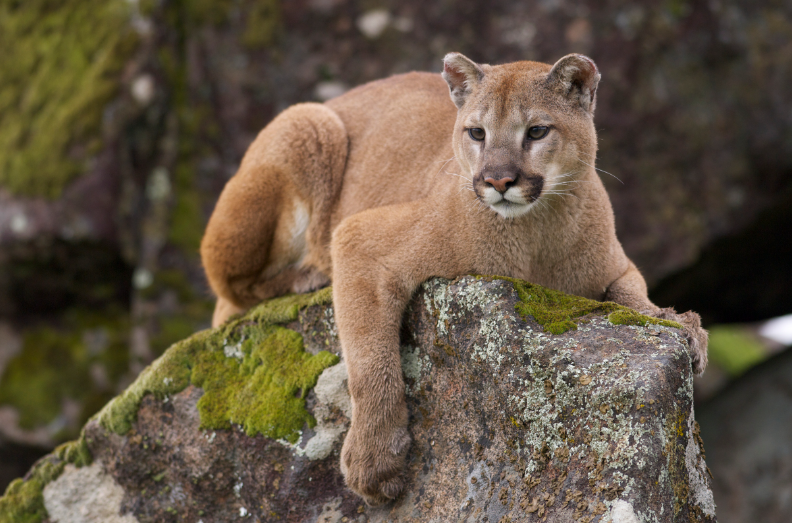
Wolves and foxes are generally shy around humans and dogs, but it’s still advisable to keep your dog leashed. Their behavior can be unpredictable, especially if they feel cornered or threatened. By keeping your distance, you contribute to a peaceful coexistence.
Raccoons and skunks are nocturnal creatures that might spark your dog’s interest. However, they can carry diseases, and it’s best to avoid contact. Keep your dog on a leash during dusk and dawn, and if you spot a raccoon or skunk, calmly steer clear to prevent any unintended confrontations.
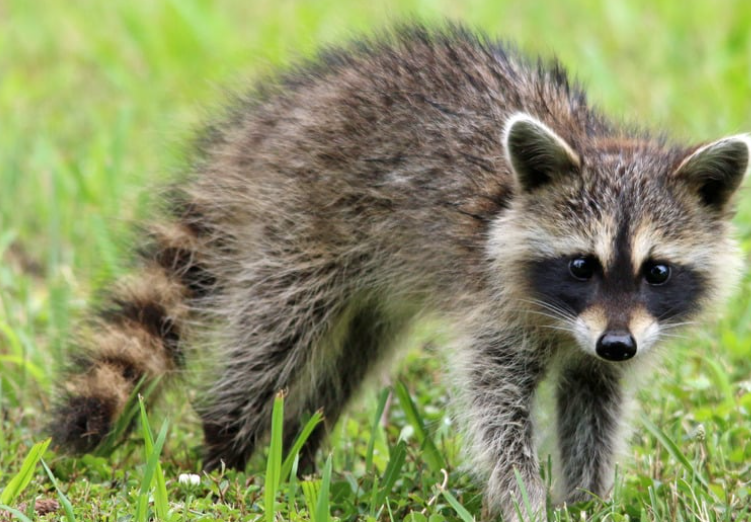
Admiring wildlife from a distance is the golden rule. Avoid feeding them, as this disrupts their natural behaviors and can lead to dependency. Pack out all trash, and practice the Leave No Trace principles to ensure a healthy ecosystem for both the animals and future generations of hikers.
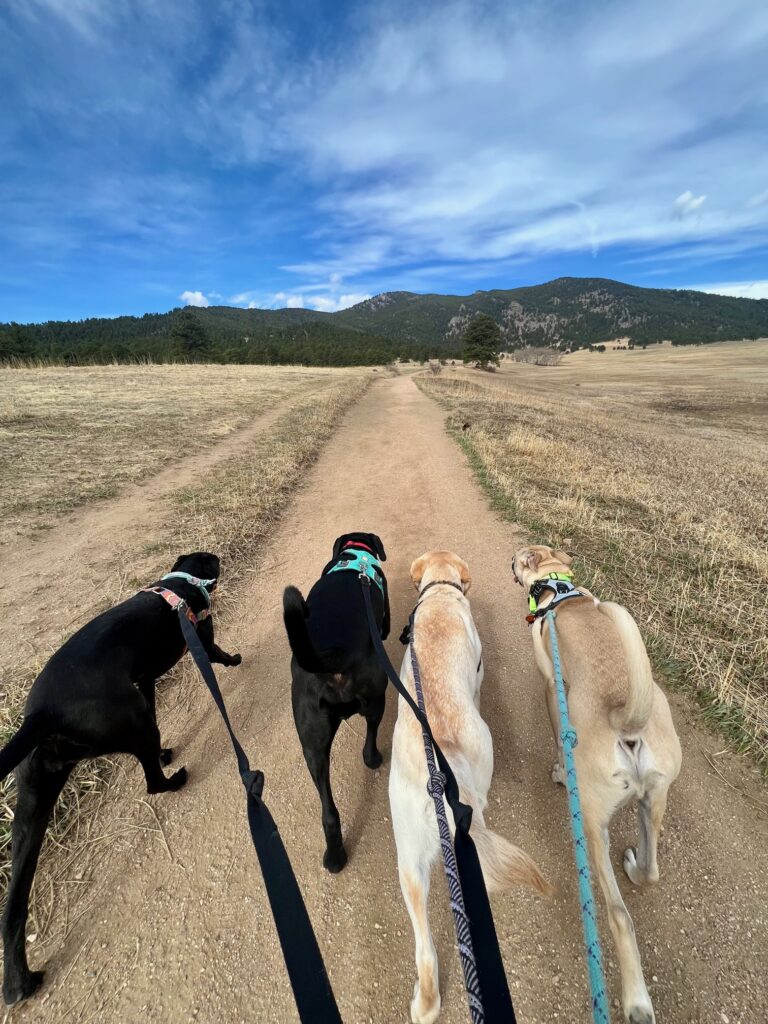
Encounters with wildlife add a layer of enchantment to your hiking experiences, connecting you to the wonders of the natural world. Each encounter is an opportunity to observe, appreciate, and respect the lives that thrive beyond our everyday routines. By adhering to these guidelines, you can ensure that your interactions with wildlife are memorable, harmonious, and educational for both you and your canine companion. As you lace up your hiking boots, remember that you’re stepping into the rhythm of nature’s dance – a dance of awe, respect, and the beauty of coexistence. Happy hiking!
With these insights, you’re well-prepared to handle various wildlife encounters during your hikes with your dog. Always prioritize safety, respect for the creatures, and the preservation of their habitats, ensuring a rewarding and responsible outdoor experience for everyone involved.

All Hike Doggies must meet the following requirements to ensure all our doggies remain safe and have an awesome hike:
If your doggie does not meet these requirements, we recommend neutering/spaying (if you are not planning on breeding your cutie) & do targeted training in any area where he/she may need some help so they can enjoy an enriched lifestyle full of outdoor fun with friends!